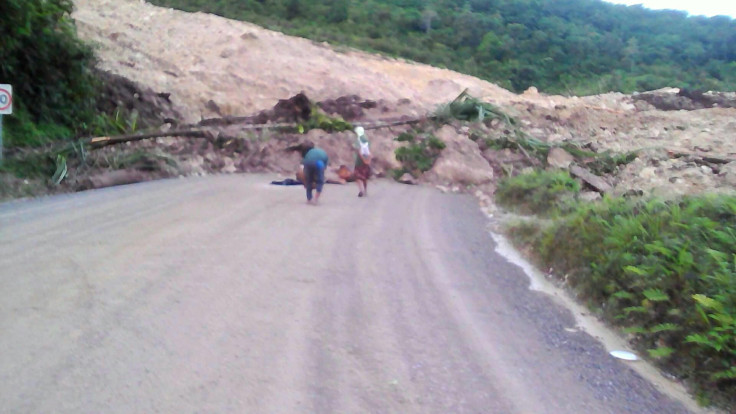Papua New Guinea Earthquake Update: At Least 16 Dead, Dozens Injured

A 7.5 magnitude earthquake struck Papua New Guinea early Monday, claiming 16 lives and injuring dozens in the remote Oceania country in the southwestern Pacific Ocean, Guardian reported.
The earthquake, viewed as the strongest to ever hit the country, devastated the Southern Highlands, Hela Province and the Western Highlands region and propelled ExxonMobil — the country’s biggest export earner — to suspend its $19bn liquefied natural gas (LNG) plant.
The United States Geological Survey reported, in the wake of the quake, that dozens of aftershocks will continue day and night including a 5.7 quake on Tuesday afternoon.
Owing to the remoteness of the region, information on the extent of the devastation was hard to amass, as services such as power and communications were cut and roads were blocked due to landslides.
Secretary General of the Papua New Guinea Red Cross, Uvenama Rova, said he suspected the extent of the damage and the deaths could be significantly higher, gaging by the reports he received from his contacts in the affected area.

Rova confirmed 11 deaths in the Southern Highlands region and five in Hela province. The information provided by ExxonMobil revealed that at least 10,000 families were affected in the region.
“This is the largest earthquake we’ve ever had and its right in the center of our country, and we don’t know how many casualties yet, we are still in the assessment stage,” said Rova.
The Red Cross reports suggest that concrete and bridges were destroyed in Tari — a town in Papua New Guinea. Reports also indicated the houses in the town had sunk into the ground.
Rova said, “But we do know schools and infrastructure are devastated, and normal activities within Tari and Mendi town have shut down.”
On Wednesday, Southern Highlands Governor William Powi said the disaster has traumatized his people who were still trying to assess the extent of the damage wrought by the earthquake.
According to the data provided by the Earthquake Tracker, there were reportedly 16 earthquakes in the past 24 hours in the region. On Tuesday, a 6.2 magnitude earthquake struck Mendi in the southern highlands of Papua New Guinea.
Meanwhile, the Papua New Guinea has government requested assistance from Australia to deal with the crisis. After receiving the request, Australian Foreign Minister Julie Bishop said, in addition to providing logistical support to the defense force, they will also dispatch a RAAF C-130 to conduct aerial surveillance of the affected regions, Guardian reported.
Prime Minister of Papua New Guinea, Peter O’Neill, visited the affected areas Tuesday. Owing to the mass destruction caused by the earthquake, a state of emergency will be declared by the government, the report said. The prime minister said the officials are still assessing the damage inflicted by the quake.
“There are communities that have suffered from this natural disaster, and we are sending our soldiers and other Government agencies to support our people in their time of need,” he said. “We know that there have been houses lost, roads cut by land slips and disruption to services.”
© Copyright IBTimes 2025. All rights reserved.




















